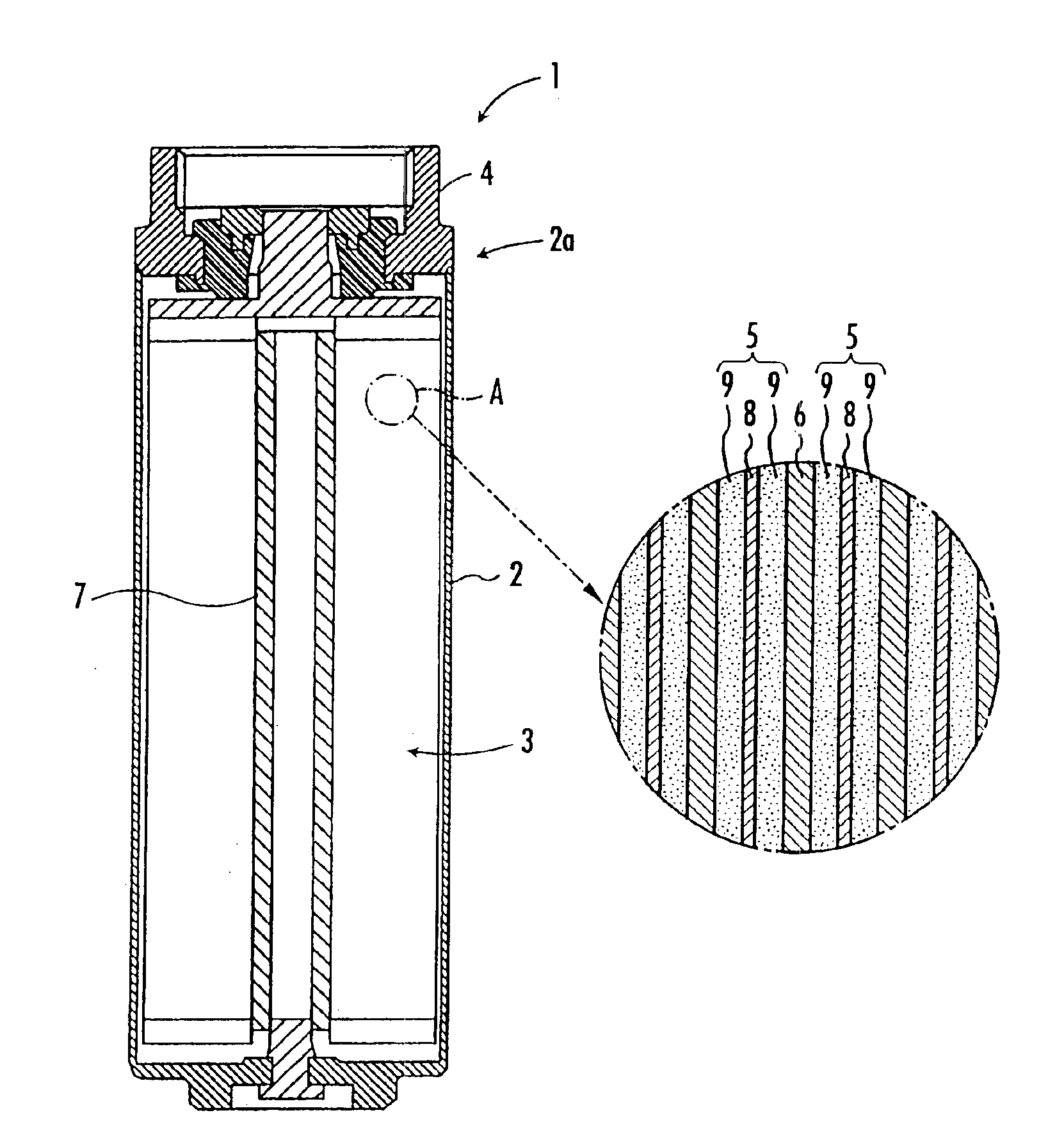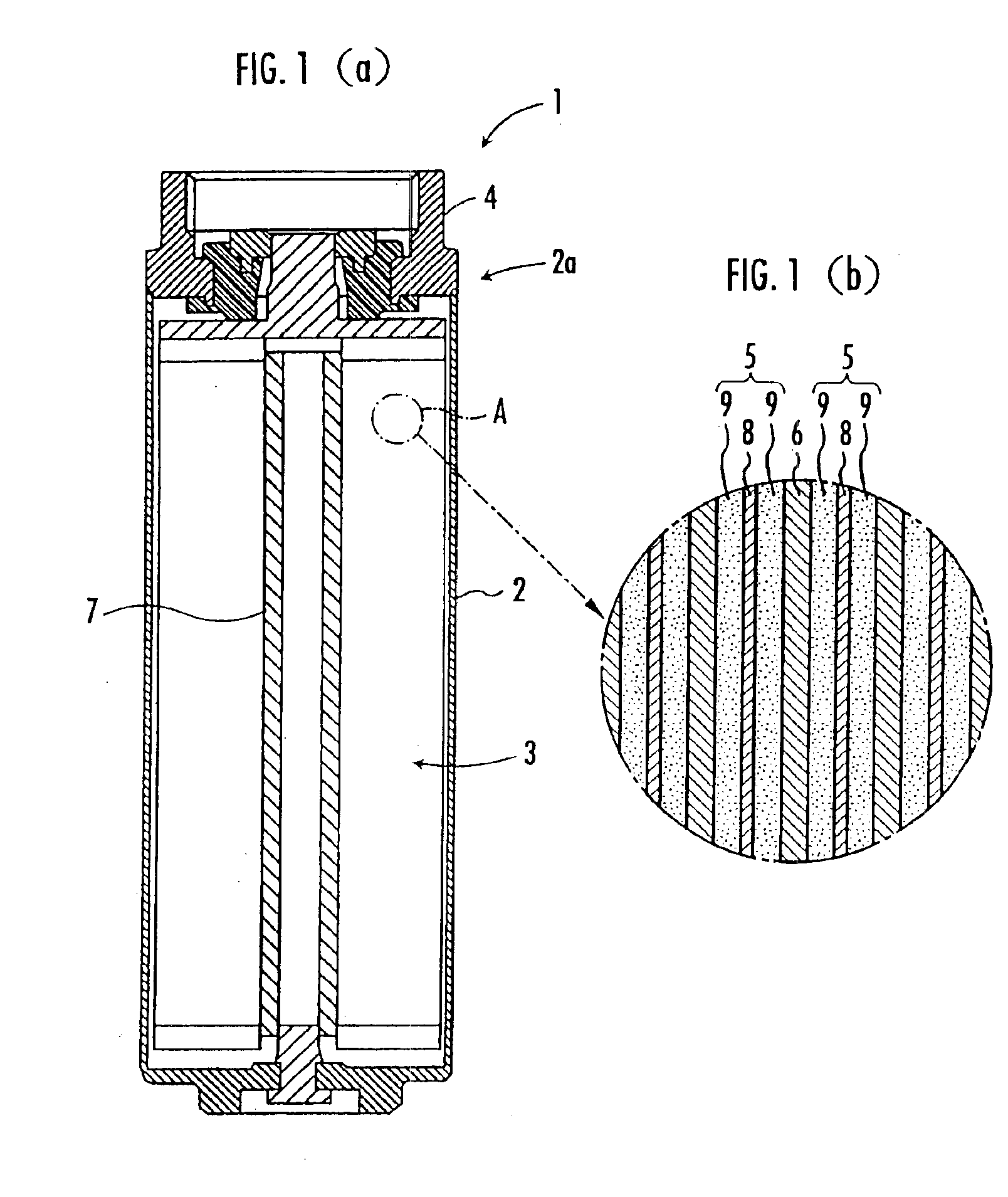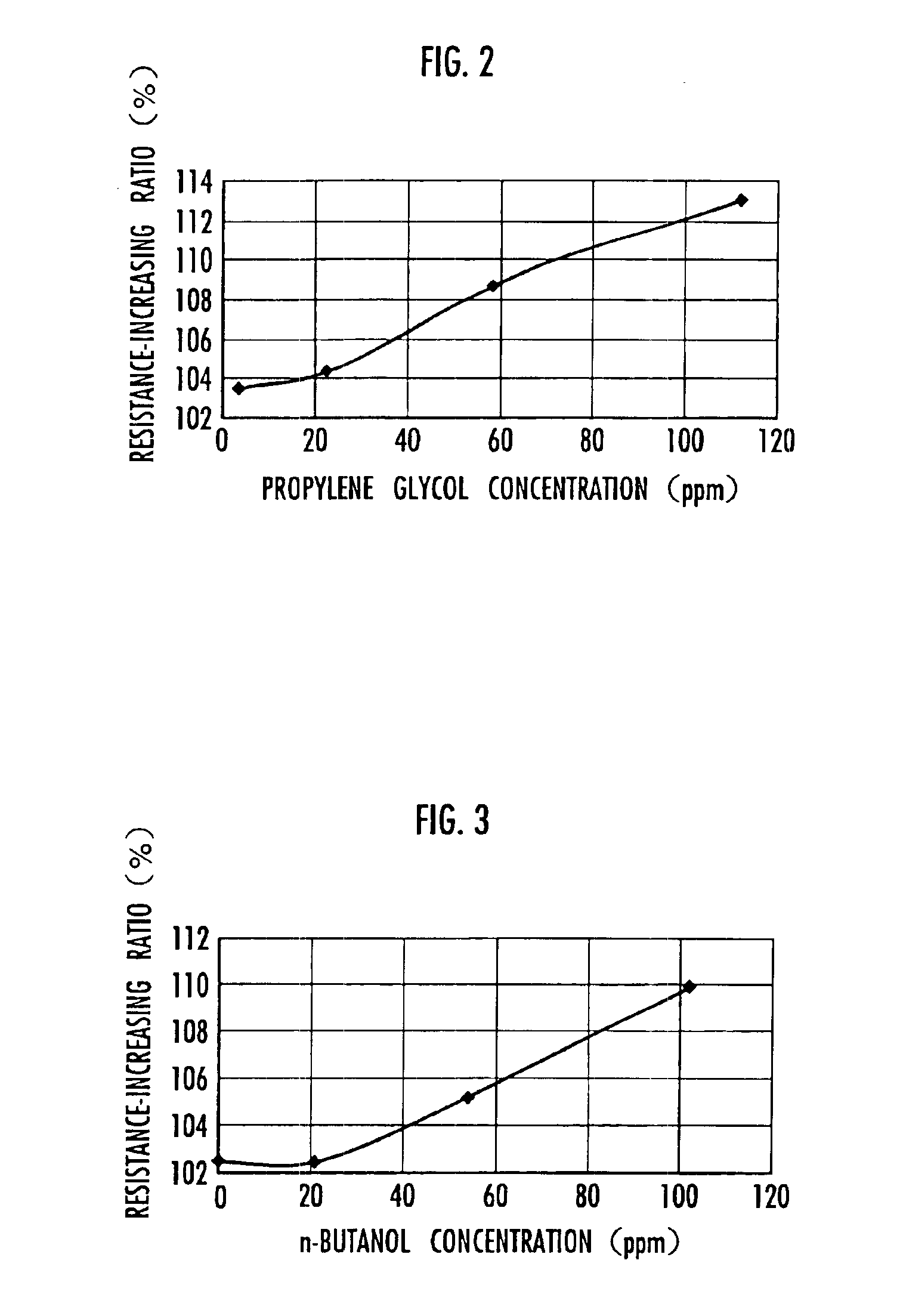Electrical double-layer capacitor
a double-layer capacitor and capacitor technology, applied in the field of electric double-layer capacitors, can solve the problems of reducing the withstand voltage degrading the capacity of an electrical double-layer capacitor, and the disadvantage of a large increase in resistance when used under continuous application of high voltage, and achieves a small increase in resistance and high energy residual ratio
- Summary
- Abstract
- Description
- Claims
- Application Information
AI Technical Summary
Benefits of technology
Problems solved by technology
Method used
Image
Examples
example 1
[0072]In the present example, an activated carbon as an active material was first mixed with acetylene black and polytetrafluoroethylene in a weight ratio of activated carbon: acetylene black: polytetrafluoroethylene=84:8:8 to obtain a mixture. The mixture was further added to isopropanol as an auxiliary agent for kneading, and kneaded under pressure for 8 minutes to obtain a kneaded product in which polytetrafluoroethylene is fibrillated.
[0073]Next, the kneaded product was ground to a ground powder having an average particle size of about 1 mm, and the ground powder was subjected to calendering to obtain a sheet-like molding. Then, the sheet-like molding was rolled to prepare an electrode sheet (carbonaceous material layer) 9 having a width of 110 mm. The electrode sheet was adhered to both sides of the aluminum current collector 8 having a width of 115 mm to prepare a polarizable electrode 5. The polarizable electrode 5 was continuously dried by exposing it to dry air of 150° C. s...
example 2
[0083]The electrical double-layer capacitor 1 was prepared exactly the same way as in Example 1 except that, when the nonaqueous electrolyte solution impregnated into the electrode element 3 was collected and analyzed by gas chromatography after the electrical double-layer capacitor 1 was prepared, the nonaqueous electrolyte solution was adjusted to contain 23 ppm of propylene glycol as glycols.
[0084]Next, the initial resistance and the resistance after a lapse of 256 hours were measured exactly the same way as in Example 1 for the electrical double-layer capacitor 1 obtained in the present example, and the resistance-increasing ratio relative to the initial resistance was calculated. The results are shown in Table 1 and FIG. 2.
example 3
[0091]The electrical double-layer capacitor 1 was prepared exactly the same way as in Example 1 except that, when the nonaqueous electrolyte solution impregnated into the electrode element 3 was collected and analyzed by gas chromatography after the electrical double-layer capacitor 1 was prepared, the nonaqueous electrolyte solution was adjusted to contain 22 ppm of n-butanol as primary alcohols.
[0092]Next, the initial resistance and the resistance after a lapse of 256 hours were measured exactly the same way as in Example 1 for the electrical double-layer capacitor 1 obtained in the present example, and the resistance-increasing ratio relative to the initial resistance was calculated. The results are shown in Table 2 and FIG. 3.
PUM
 Login to View More
Login to View More Abstract
Description
Claims
Application Information
 Login to View More
Login to View More - R&D
- Intellectual Property
- Life Sciences
- Materials
- Tech Scout
- Unparalleled Data Quality
- Higher Quality Content
- 60% Fewer Hallucinations
Browse by: Latest US Patents, China's latest patents, Technical Efficacy Thesaurus, Application Domain, Technology Topic, Popular Technical Reports.
© 2025 PatSnap. All rights reserved.Legal|Privacy policy|Modern Slavery Act Transparency Statement|Sitemap|About US| Contact US: help@patsnap.com



